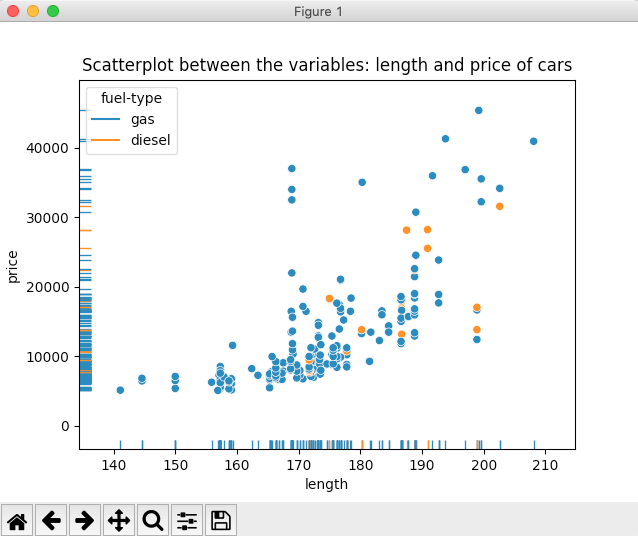Overview:
- The rugplot() function of seaborn helps visualising data points by providing one more visual aid through ticks in X, Y axes and through the hue semantics of the ticks.
Example:
|
# Example Python program that creates a seaborn plot with # Import the Automobile Data Set into a DataFrame # Create a scatter plot # Add ticks to the scatter plot axes plt.title("Scatterplot between the variables: length and price of cars"); |
Output:
|
symboling normalized-losses make ... city-mpg highway-mpg price 0 3 ? alfa-romero ... 21 27 13495 1 3 ? alfa-romero ... 21 27 16500 2 1 ? alfa-romero ... 19 26 16500 3 2 164 audi ... 24 30 13950 4 2 164 audi ... 18 22 17450 .. ... ... ... ... ... ... ... 196 -1 95 volvo ... 23 28 16845 197 -1 95 volvo ... 19 25 19045 198 -1 95 volvo ... 18 23 21485 199 -1 95 volvo ... 26 27 22470 200 -1 95 volvo ... 19 25 22625 |
